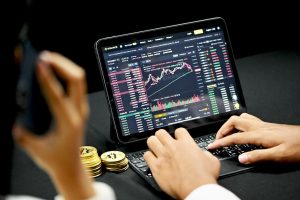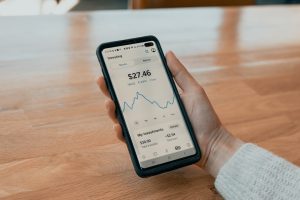Stochastic is a popular technical analysis indicator used by forex traders to determine the momentum of a currency pair. It is a momentum oscillator that helps traders identify overbought and oversold conditions in the market. The stochastic indicator measures the closing price of a currency pair against its price range over a period of time. In this article, we will discuss what stochastic is, how it is calculated, and how it can be used in forex trading.
What is Stochastic?
Stochastic is a technical analysis indicator that was developed by George Lane in the late 1950s. It is a momentum oscillator that measures the relative position of the closing price of a currency pair to its price range over a specified period of time. The stochastic oscillator is made up of two lines, %K and %D. The %K line is the faster line, and the %D line is the slower line. The indicator ranges between 0 and 100, with overbought conditions occurring when the indicator is above 80, and oversold conditions occurring when the indicator is below 20.
How is Stochastic Calculated?
Stochastic is calculated using the following formula:
%K = (Closing Price – Lowest Price) / (Highest Price – Lowest Price) * 100
%D = 3-day Simple Moving Average of %K
The closing price is the most recent price at which a currency pair was traded. The highest price is the highest price a currency pair reached during the specified period, and the lowest price is the lowest price a currency pair reached during the specified period. The specified period is usually 14 days, but it can be adjusted to suit the trader’s preferences.
How can Stochastic be Used in Forex Trading?
Stochastic can be used in forex trading to identify overbought and oversold conditions in the market. When the indicator is above 80, it indicates that the currency pair is overbought and a reversal is likely to occur. Conversely, when the indicator is below 20, it indicates that the currency pair is oversold, and a reversal is likely to occur.
Traders can also use stochastic to identify bullish and bearish divergences. A bullish divergence occurs when the price of a currency pair is making lower lows, but the stochastic oscillator is making higher lows. This indicates that the momentum is shifting to the upside, and a bullish reversal is likely to occur. A bearish divergence occurs when the price of a currency pair is making higher highs, but the stochastic oscillator is making lower highs. This indicates that the momentum is shifting to the downside, and a bearish reversal is likely to occur.
Another way traders can use stochastic is by combining it with other technical indicators, such as moving averages or trend lines. For example, a trader may use stochastic in conjunction with a moving average crossover strategy. When the moving average crosses above the price, and the stochastic indicator is oversold, it can be a signal to buy. Conversely, when the moving average crosses below the price, and the stochastic indicator is overbought, it can be a signal to sell.
Conclusion
Stochastic is a popular technical analysis indicator used by forex traders to identify overbought and oversold conditions in the market. It is a momentum oscillator that measures the relative position of the closing price of a currency pair to its price range over a specified period of time. Stochastic can be used by forex traders in a variety of ways, including identifying bullish and bearish divergences, combining it with other technical indicators, and using it in conjunction with a moving average crossover strategy. Understanding how stochastic works and how to use it can help forex traders make informed trading decisions and improve their overall profitability.





